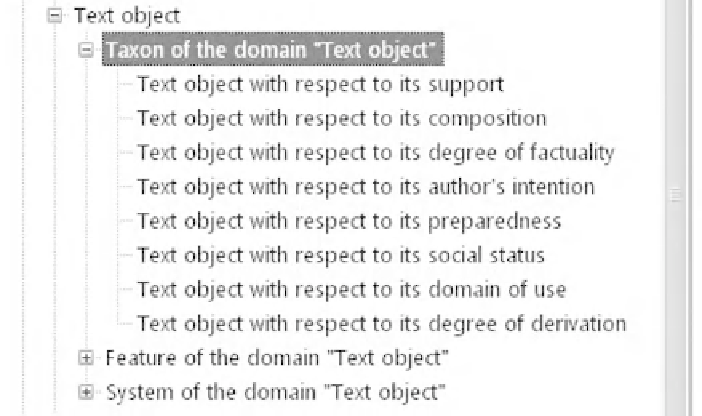Information Technology Reference
In-Depth Information
The taxonomic domain represented by the term [Discourse object], however,
holds a particular importance for the approach developed herein of description and
indexation of the content of a text, a corpus or even an entire audiovisual archive. It
brings together the conceptual vocabulary we need in order to analyze, on the one
hand, the type of discourse (descriptive, narrative, explicative, polemic, etc.) used by
an author to “speak” about a given subject, and on the other hand, the discursive
features of the thematization of a subject - features such as the
purpose
of a subject,
the
main theme
(the thematic isotopy), the author's
point of view
, the
thematic
hierarchization
in the discourse, etc. In other words, here we find categorized that
specific category of analytical objects which we have termed
discursive objects
(see
Chapters 5 and 7).
Figure 13.14 shows an extract of the taxonomic domain which is organized
around the basic conceptual term [Discourse object]. For the moment, we have
primarily concentrated on identifying the main types of discourse and on a recurring
set of discursive features which are needed for our particular analyses. That said, in
structuring this taxonomic domain in the form of an elementary vocabulary of
conceptual terms, we have drawn inspiration from research in rhetoric and discourse
analysis (see e.g. [JAW 99; MAC 02; MAI 96]) and from different descriptive
terminologies and ontologies devoted more particularly to the object “discourse”.
Figure13.15.
Thetaxonomicdomainrepresentedbytheconceptualterm[Textobject]
The second central taxonomic domain is, as mentioned above, that which is
organized around the conceptual term [Text object]. Figure 13.15 shows an extract

